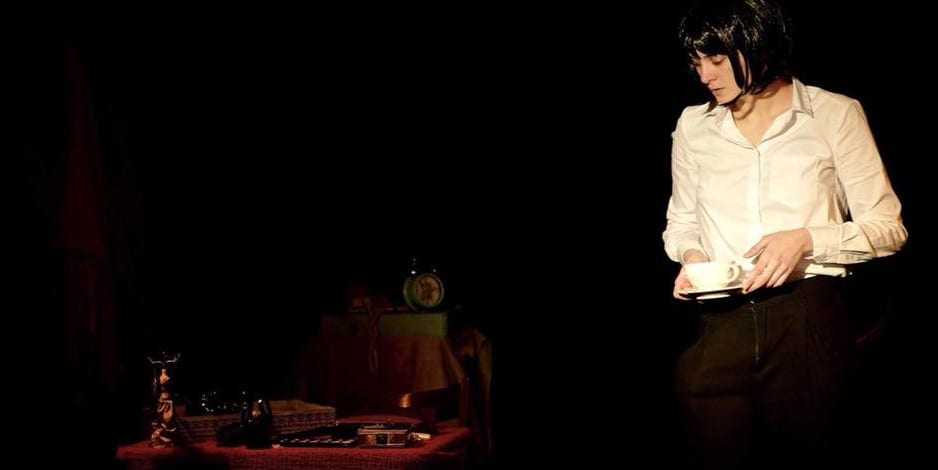Settling into the nearly empty Pixel theatre in Paris, the décor announces the colour of Jean Genet’s one-act play: a red vanity cabinet, a red table and a red velvet chair. Three bouquets of white and gold fake flowers do however sting my eye as Genet specifically wrote at the begging of the play in a chapter entitled “How to Play The Maids” that the flowers had to be real. For the writer of Our Lady of the Flowers, who used flowers a metaphor for so many aspects of his life, it would have been such a nice touch. Understandably fake flowers are probably due to budget questions. There is no bed either although the scene takes plays in the bedroom of the maid’s wealthy Madame and the bed also figures in Genet’s requirements. Again, possibly due to the small size of the stage. Fine. Let’s have a look at the play.
Inspired by a real story: the Papin case, where two sisters, employed as maids, brutally murdered their employer’s wife and daughter, the murder was seen as a blow against class oppression.
In the absence of their mistress, Claire and Solange play a game they like to call the ceremony. Claire makes herself up at the dressing table and calls in Solange to prepare her dress and accessories. The game ends with Solange pretending to strangle her sister who is sat in front of her vanity cabinet wearing one of Madame’s brown dresses. Why brown, you might ask. Good question. The dress is supposed to be red, announcing the crime of the dénouement of both the game and the play. Plus, the added dialogue on the colour “caramel” of the dress is just bizarre.
The acting is very difficult to critique because the two women are playing someone playing someone else but the dialogues are punctuated by too many mistakes, the voices and tones are far too similar between both characters played by each actor. However, when Claire and Solange go back to playing their own selves, a few long monologues power through the play illuminated by Solange’s shiny eyes and deviant smile.
The maids barely have the time to clean up their mess that Madame is already entering the property. The Madame fantasised since the begging of the play turns out to be in fact a Monsieur dressed as a wealthy woman. The accuracy with Genet’s vision and life is striking and beautifully pleasing. Sadly, the character is not played seriously enough, after all, Genet did say that Madame shouldn’t be too cliché. It ends with yet another disappointment: Claire is about to drink the poison set up to kill Madame, but before she does, the stage turns dark.

